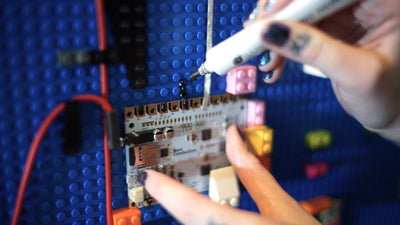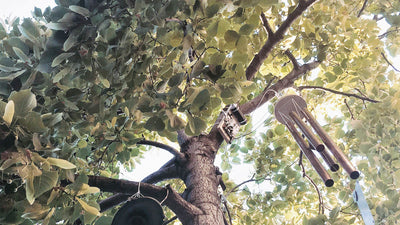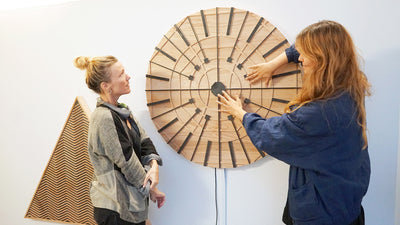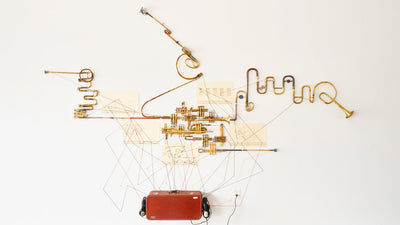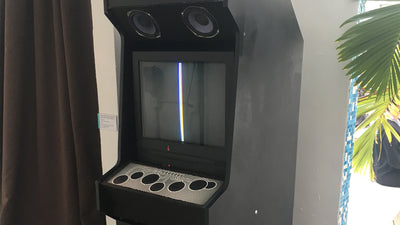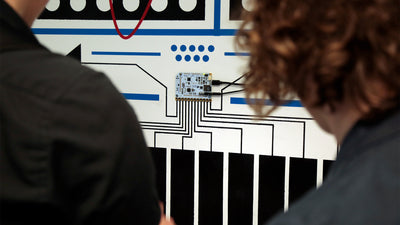Art and Decibels - Interactive paintings with the Touch Board

The iconic work of Denver-based artist Thomas Evans combines visual artistry and unique interactions powered by the Touch Board and Electric Paint.
The work of Denver-based artist Thomas Evans is not done justice by photographs alone. His portraits of iconic figures are not only truly captivating in their photoreal appearance, but are also hooked up to multiple Touch Boards and can be played like a MIDI controller during a live set. He makes his art interactive.
On discovering the Touch Board back in late 2013, Thomas found a new way to unite visual and musical expression and get sound onto canvas. He now uses the hardware and Electric Paint to integrate capacitive sensors seamlessly next to oil paint.
We were so impressed by the video he sent us, Grace got in touch for an interview. You can find out more about Thomas, AKA Detour, on his website and Instagram. He's really good at documenting his work so make sure you check it out, it's inspirational stuff.
Hey! So can you tell me a bit about your background as an artist and why you started to use our products?
While in college I started focusing more on portraits of musicians because I was heavily influenced by music. In 2009 I became infatuated with figuring out how to connect the viewer with the subject on the canvas. I made entire collections on top of repurposed 12” inch vinyl records. People loved it. I even started making my own canvases so that I could install speakers and amplifiers to my painting. My collections were boombox canvases that rocked the room.
I mulled over the idea of deconstructing and reconstructing a MIDI controller and installing it. Unfortunately the technology and the canvas didn’t mesh well. It wasn't until I stumbled across the Bare Conductive Kickstarter that I saw some of the potential with the Touch Board. When I got the package and took the Electric Paint and Touch Board to one of my DJ/producer friends, it became the start of a long process to create these interactive paintings. I envisioned that they would be in any gallery in the world and can also be used for live performances. The technology added the touch sensor to my paintings that I have been wanting for a while so I was stoked to get it in my hands and install it in my work!
Where do you look for inspiration when creating a new piece of work?
I look at a lot of things but I mainly focus on exceeding the audiences expectations and figuring out how to break them, and the live performances of DJs and producers. I want to break the traditional expectation of what art is suppose to be. That’s why I love the MIDI controller – because everyone will create a unique and different sound with it.
How did the Touch Board and Electric Paint help you push your artwork into a new spectrum?
I was able to add the touch sensor to my tool belt. I had the visual and the sound but and now I can have the viewer communicate back with the painting based on how the painting makes them feel. When I do shows or exhibits, I think of it as being more of an experiential show rather than a visual show.
How compatible was the paint and Touch Board with other materials or software?
The product is new so I’m still experimenting with it to this day. I learn something every time I try it on some art product or surface. I was extremely happy that many of the various software I connected it to recognized the board. I’m still looking to see what other programs it can connect with.
How is the Touch Board set up? Is it in stand alone MIDI mode?
I use the Touch Board in two different ways – one is the mode that is installed when it’s shipped. These pieces are usually combined with a bunch of other electronics that allows it to be a touch boom box painting with speakers. The other way is with the MIDI mode turned on and hooking it up to a computer. This way is the real ground breaker because it allows me to collaborate with friends and to have performance on each piece. Its setup more like an instrument.
When looking at the paintings, you can hardly tell they are interactive until someone touches them! How did you conceal the technology so well?
Concealing the technology is first and foremost. I want the painting to be able to stand on its own in any gallery around the world. I want the quality of the painting to come first and then have the technology blowout expectations! For example, in my Nasir Jones [Nas] painting, I have the Electric Paint seamlessly beside black oil paint so they blend together. My Tupac painting has the paint in the darkest areas so you can even tell it’s there. It’s literally a part of making the painting complete rather than a whole separate piece. That’s the strategy to introduce it to the traditional art world. Otherwise, it comes off as a novelty thing. So far the technology has stood the different tests I’ve been throwing at it.
What difficulties did you come across when making your work interactive?
I’ve only had two concerns. One is the solubility of the paint. Even after drying for some time, it is still easy to have moisture reactivate it. However, I have been experimenting with various sealers to prevent this. So far, the sealers have been helping out a tremendous amount. The second issue has been the flexibility of the paint. Flat and rigid surfaces are the most ideal. It’s not a big problem because my work usually requires that to paint and install electronics on anyway.
Are you planning on working with the Paint or Touch Board in the future? Where does your artwork go from here?
I am definitely planning on using the paint and Touch Boards in the future. I have an upcoming show where I really want to make a statement. I’m brainstorming different ways to bring out more of the performance elements in the pieces. I also want to experiment with the proximity sensors as well. I haven’t gotten to use that yet but I think that has a lot of potential. Definitely check out my Instagram account. I post all my recent completed work and work in progress pieces there. People are able to see what goes on behind the scenes of my studio!
Images & Video: Thomas Evans.
We love it when you share your projects! Post your project on Instagram, YouTube, Vimeo, or Twitter, and make sure to tag @bareconductive or use #bareconductive. You can also send your videos and photos to info@bareconductive.com. Submit your project for a chance to be featured and you'll also receive 20% discount.


